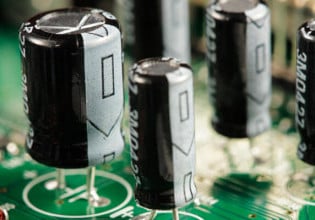Synchronizing Conventional and Renewable Energy Generation with Consumption
GE is putting a new, highly-efficient hybrid power plant into operation in Berlin. With this pioneering concept, which offers scalable capacity, GE and its project partners Kofler Energies and BELECTRIC are breaking new ground in the area of innovative, decentralized energy supply. The new hybrid power plant, which was developed by Kofler Energies and GE's planning office BLS Energieplan, combines photovoltaic with flexible Jenbacher combined heat and power (CHP) technology and an innovative battery solution. Thanks to an intelligent energy management system and comprehensive operational oversight, the power output can be controlled to meet demands as efficiently as possible.
The plant will not only supply power and heat to the GE Power Conversion production site in Marienfelde, Germany, but it also will feed power into the grid. The system is based on a scalable business model that also can be adapted for larger units.
The centerpiece of the hybrid power plant is a Jenbacher J312 gas engine with integrated heat storage and an efficiency level of 89.2 percent. The 400kW system covers the basic heat load of the site during the heating season and is fueled by energy-efficient natural gas. The plant enables primary energy savings of around 30 percent compared to systems that generate heat and power separately through conventional heating and external electricity procurement.
A 600kW solar power system with an operating voltage of 1,500 Volts has been installed on the roof of the production hall. All measurement readings required for monitoring and controlling the complex system can be called up and managed remotely via the central energy management system.
When the amount of power being generated is high but consumption is low, surplus power is stored in a battery with a capacity of 200kWh. This can then be released and fed into the plant network as required to meet higher levels of demand, bringing flexibility to power generation. Surplus power only is supplied to the public grid if the battery is completely full.
The boilers, pumps and valves are controlled in a way that ensures that the system always operates efficiently and in line with demand. The data recorded makes energy consumption transparent and can be used to help adjust the power supply to meet requirements to the optimum effect. Thanks to the separately installed counters, it is also possible to distinguish between measurements for electricity from renewable energy sources and from CHP.
“In the future of energy, supply asks to synchronize conventional and renewable energy—and generation and consumption as well,†said Stephan Reimelt, president and CEO of GE Europe and CEO of GE Germany. “This is precisely where our hybrid power plant concept comes in. We need to turn new ideas into reality if we want to ensure Germany’s continued success as the world’s largest energy laboratory and market for innovation.â€
Bernhard Beck, executive chairman of BELECTRIC Holding GmbH, the company responsible for the solar power plant, explains the system: “On the roof of the production hall there are 345 lines each containing 20 high-performance thin-film solar modules. This modular setup offers highly flexible scope for expansion. This is the world’s first roof-mounted solar power system to operate at 1,500 Volts. The high operating voltage means that the amount of material used for the power electronics can be reduced, making this process of generating solar power even more cost-effective.â€
“As a flagship project, the German hybrid power plant in the Marienfelde district of Berlin shows that CHP, solar power and battery systems complement one another perfectly over the course of the year,†said Günter Nickel, CEO of Kofler Energies AG. “During the heating season, most of the power is produced via CHP, while the amount generated by the solar power system increases in the warmer months of the year. The battery can be used to deal with any temporary surpluses or shortages of power. This combination enables a very high degree of self-sufficiency, ensures a reliable supply and offers the opportunity to store surplus energy and use it efficiently, either internally or externally.â€
The companies involved in the Berlin-based project stressed the importance of CHP systems in the future energy generation landscape as decentralized solutions and bridging technologies that operate in close proximity to consumers. This would enable the volatility of renewable energy to be offset with additional capacity that can be used in a flexible way. The amendment of the German Combined Heat and Power Generation Act (KWKG) looks set to increase the target share of electricity produced via CHP to 25 percent by 2020. To achieve this goal, long-term planning and investment security needs to be provided and a reliable regulatory framework put in place for operating CHP plants.
The hybrid power plant is a statement of GE’s commitment to its growth and innovation strategy in Germany. At its Berlin site, which was GE’s first foothold in the German market 130 years ago, the company has recently expanded its capacity by adding a new testing facility and another manufacturing line. With around 800 employees, Power Conversion is one of the largest GE sites in Germany and a globally recognized center of excellence for frequency converters. The new training center is due to open in September 2015. The ground was officially broken in 2013 by Jeff Immelt, Chairman and CEO of GE, and German Chancellor Angela Merkel.
Technical Data of the Plant: Combined heat and power plant electrical output 400kW; thermal output 491kW; supplied power 999kW; electrical efficiency 40.0%; thermal efficiency 49.2%; total efficiency 89.2%; flow/return temperature 90/70 degrees C. The Solar power plant/SKID: electrical output 621kW peak; number of First Solar FS Series 3 modules, black, FS-390 6,900 units; GE ProSolar central inverter, PSC-800MV-L-QC 800 kVA; DC system voltage 1,500V; AC voltage 10kV; battery/inverter; storage capacity 200kWh; max. discharge power 100kW; number of battery blocks 154 units; GE inverter, LV8000 120kVA.






